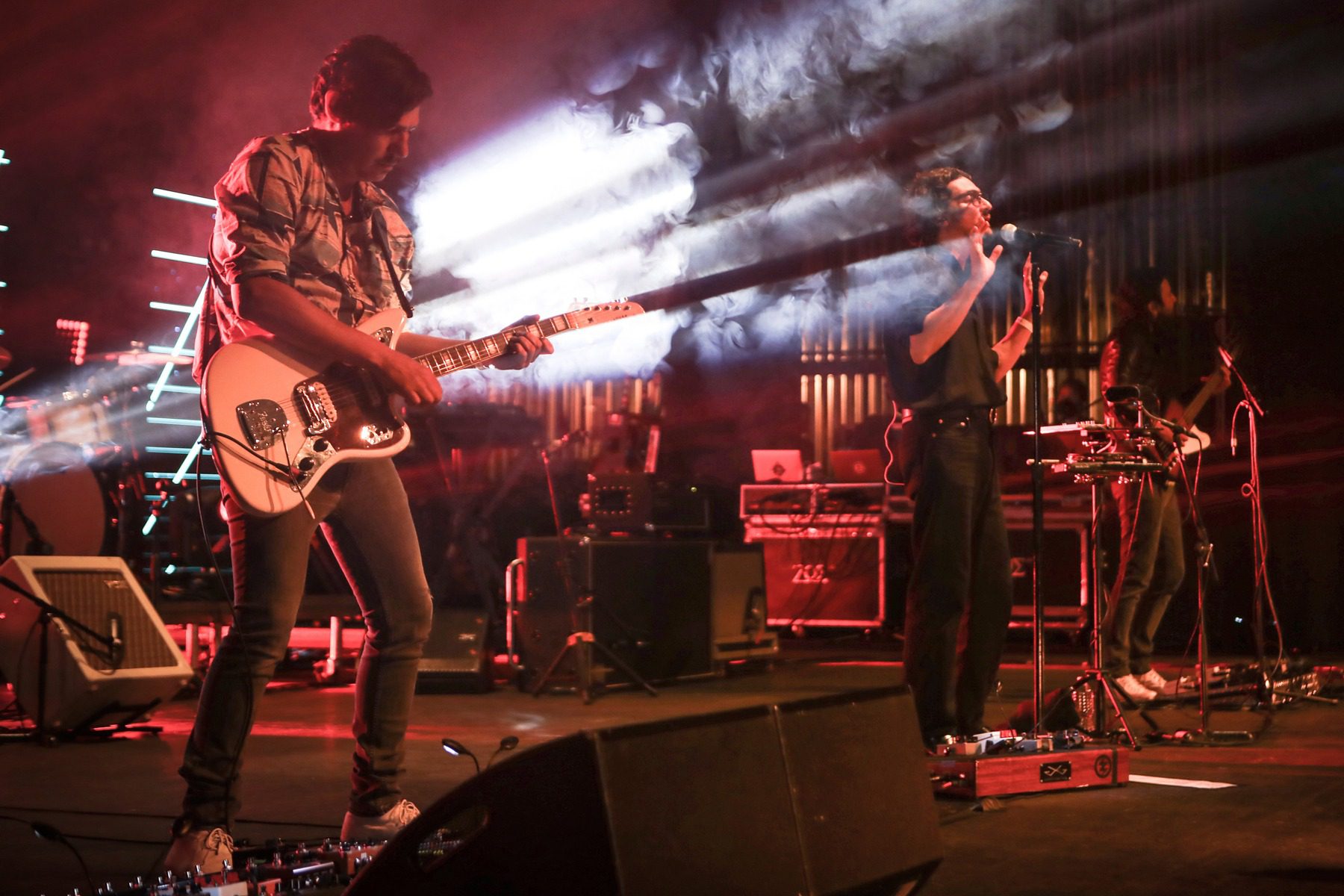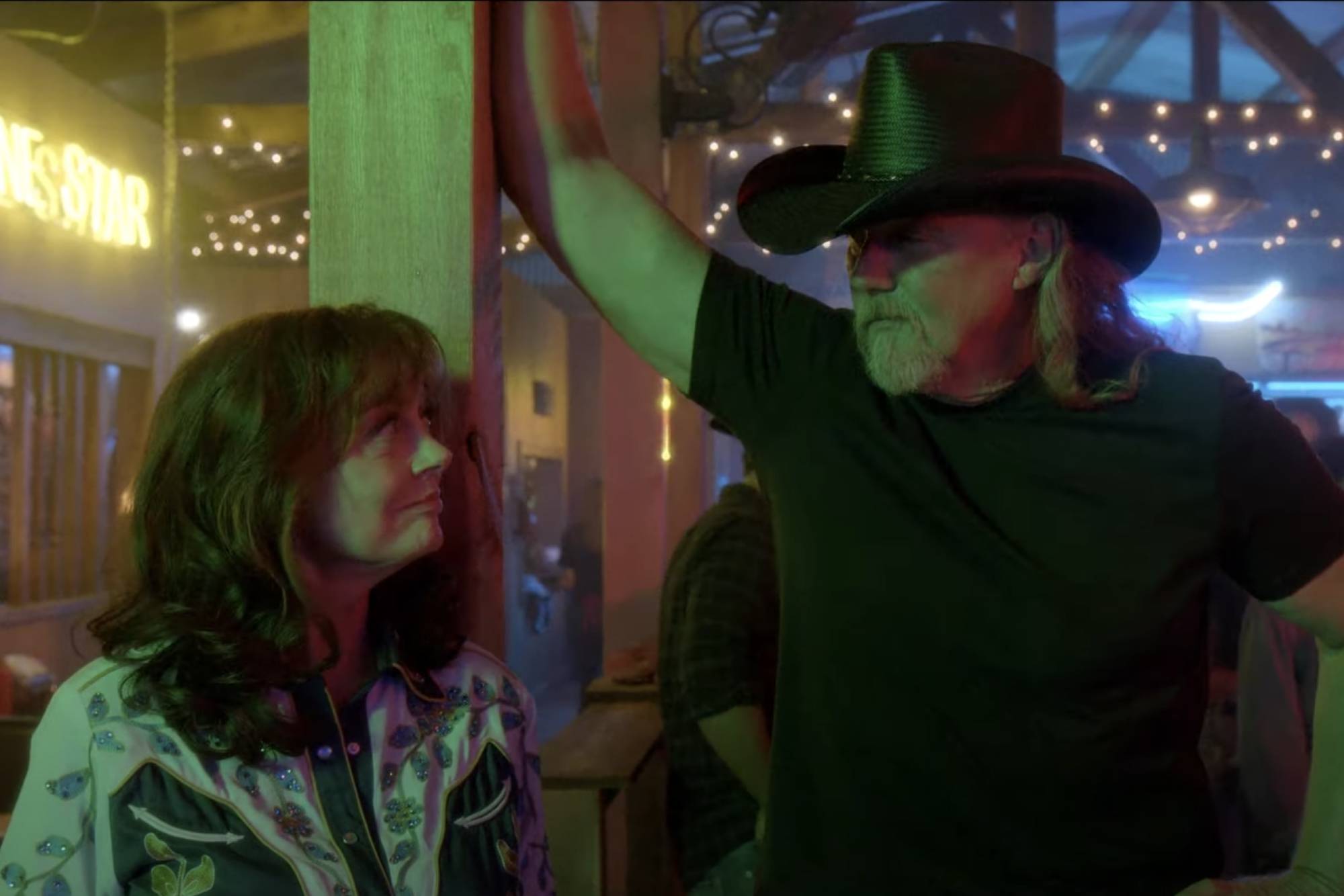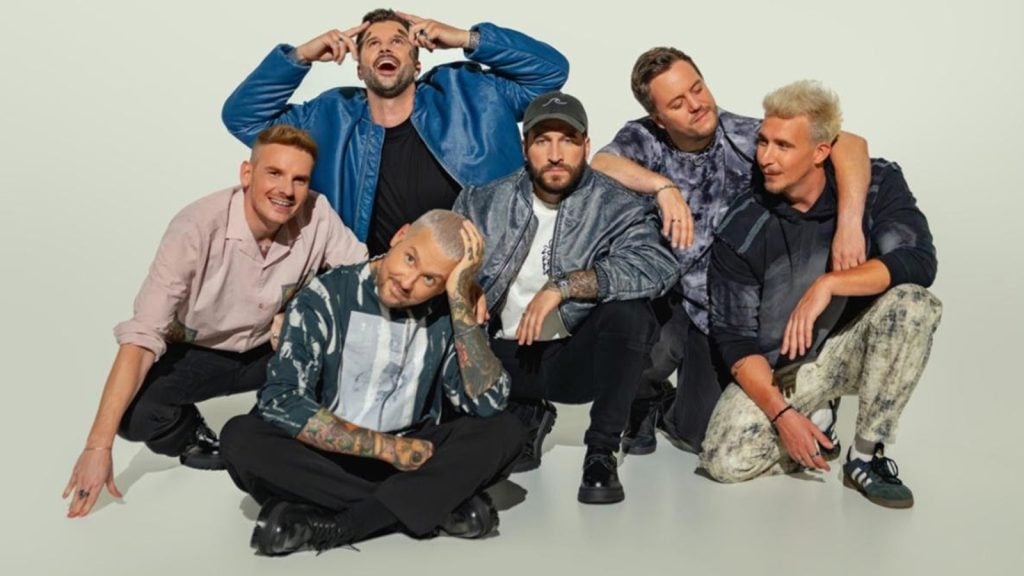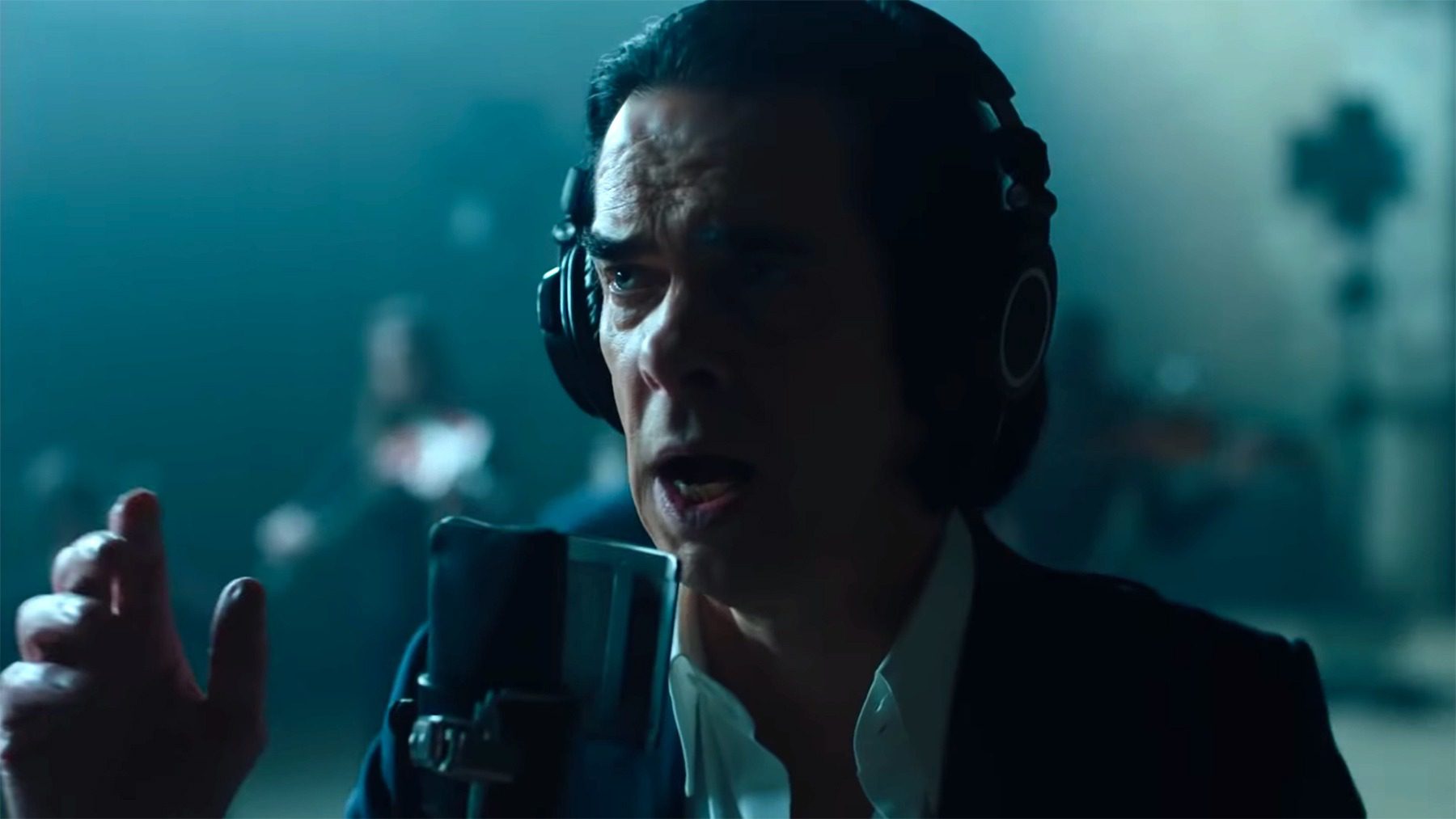
How the Pandemic Has Thrown the Latin American Tour Circuit Off Balance
Shortly after the Mexican band Zoé released their psychedelic masterwork Sonidos De Kármatica Resonancia in April, they announced something that had seemed like a pipe dream just a few months prior: a 2021 tour. But while the veteran rockers have frequently sold out some of the biggest stadiums and arenas in Latin America, the complexities of the still-lingering pandemic meant that the most feasible way for them to get back on the road at the time was through 26 shows focused only in the U.S. — and zero dates in their home country. “If we were in a normal world, they would play all over Mexico, probably 30 to 40 dates, then Argentina, Colombia, Chile, and the list goes on,” says Luana Pagini, who heads up the band’s tour strategy through the company Seitrack Management. “Right now, what we’re doing is what we can.”
While the pandemic has upended live music everywhere, its impact has been particularly harsh in Latin America, which has grappled with high Covid death tolls, uneven vaccination rates, and devastating economic consequences. Some countries have reopened more slowly and cautiously than others, resulting in a staggered return to live music that’s been a logistical nightmare for artists and their teams. Most tours in the region involve cross-border treks through major cities and markets; pulling that off has become nearly impossible, given the different safety protocols and border measures in each country. Most acts have decided to just wait until Latin America opens up more uniformly. A lucky set of artists on Zoé’s level have been able to plan shows exclusively in the U.S. — something Pagini sees as a blessing, even if it’s meant having to skip home base and a continent full of fans for now.
blogherads.adq.push(function () {
blogherads
.defineSlot( ‘medrec’, ‘gpt-mob-latin-article-inbody1-uid0’ )
.setTargeting( ‘pos’, [“mid”,”mid-article”,”btf”,”in-article1″] )
.setSubAdUnitPath(“music//latin//article//inbody1”)
.addSize([[300,250],[2,2],[3,3],[2,4],[4,2]])
;
});
Latin artists who choose to play shows in the U.S. right now face another set of pandemic-related problem. “The U.S. is the best bet for any touring Latin American artist, but working visas are expensive and taking longer than usual, tour buses are scarce, gas is very expensive, Covid protocols are constantly changing, and we are now competing for the same venues with general-market acts,” says Diana Rodriguez, CEO and founder of the artist management firm Criteria Entertainment. Many of the musicians she works with, including the Chilean artist Francisca Valenzuela and the Puerto Rican star Draco Rosa, have pushed their tours back to 2022.
When the Mexican singer-songwriter Silvana Estrada was invited to open for Rodrigo y Gabriela on a run of 11 theaters from Atlanta to Minneapolis this fall, she jumped at the opportunity. She’d been able to stage a few performances in Spain earlier in the year, but playing Mexico has been a non-starter, especially as the country — which has endured the fourth-highest Covid-related death count globally, with about 282,000 fatalities — has continued to grapple with vaccine supply chain issues and shifting approaches to re-openings. “Ciudad de Mexico, Guadalajara, Monterrey, Chiapas, Veracruz — Mexico is a big country, and the rules are changing in all the states,” she says.
blogherads.adq.push(function () {
blogherads
.defineSlot( ‘medrec’, ‘gpt-mob-latin-article-inbody2-uid1’ )
.setTargeting( ‘pos’, [“mid”,”mid-article2″,”btf”,”in-article2″,”mid-article”] )
.setSubAdUnitPath(“music//latin//article//inbody2”)
.addSize([[300,250],[300,251],[2,4],[4,2]])
.setLazyLoadMultiplier(2)
;
});
Estrada has been cultivating an audience in her home country for the last several years, and not being able to perform for those fans was tough. “They message me on my posts and on Instagram like, ‘Why were you in Spain?’ ‘Do you hate your country?’ And I’m like, ‘I really want to be there! I wish I could play in Mexico!’” she says. “People can’t imagine how difficult it is to tour in Mexico right now.”
Even setting up a U.S. tour from Mexico was fraught with challenges. Like many artists trying to come to the country, Estrada faced issues trying to get her visa, since many immigration offices have been operating at scaled-back capacities while also dealing with increased demand. Her team tried to paid additional fees to expedite the process, but things still stalled. “I waited and waited and waited and talked to my lawyers every day,” Estrada recalls. Finally, she was given a visa appointment in Guadalajara, where she spent more than five hours waiting in line in an office that only had two workers approving and rejecting requests. “I was seeing so many people waiting, and it was like ‘denied, denied, denied.’ I was thinking, ‘What am I going to do if I don’t get it? I have no other tour options.’” Luckily, the wait was worth it. Estrada was able to get her visa, though she did miss one show because of how long it took. Still, compared to artists who have had to cancel tours completely or forgo performing at all, she feels incredibly fortunate.
Visa slowdowns also affect the livelihoods of tour workers who are trying to help artists play in the U.S. “Technicians, crew members, they’re all saying to me, ‘Please, please do this visa for me, because if I have a work visa in the U.S., I can work for this band and this band and this band,” Pagani says.
But even as some people have been able to find ways to get back on the road, the overall rhythm of the Latin American tour circuit has been thrown off balance. The cancellation of major tours and festivals has had a ripple effect throughout the continent, perhaps best exemplified through the postponement of Viña del Mar, the prominent festival that takes place in Chile each February. For years, Viña has been a kick-off of sorts that brings artists from across the world to the region; tours are often planned around the event, and it’s a key place for emerging artists to raise their profile. However, the 2021 edition was cancelled due to Covid, and in September, organizers announced that the festival would be suspended until 2023.
blogherads.adq.push(function () {
blogherads
.defineSlot( ‘medrec’, ‘gpt-mob-latin-article-inbodyX-uid2’ )
.setTargeting( ‘pos’, [“mid-articleX”,”mid”,”btf”,”in-articleX”,”mid-article”] )
.setSubAdUnitPath(“music//latin//article//inbodyX”)
.addSize([[300,250],[300,251]])
.setLazyLoadMultiplier(2)
;
});
“We lose a lot, because we’ve been doing this festival for more than 60 years,” says Alfredo Alonso, who’s been the artistic director and executive producer of the festival since 2019. “When you take that piece out, you destabilize a lot of things. There are a lot of festivals in Argentina, Peru, and Bolivia that have been built around Viña, because they know Viña is like this magnetic pole that attracts major artists that promoters can then contract out for their own festivals.”
Alonso is also the partner and entertainment director of South American operations at the concert promotion company Bizarro Live Entertainment, an entertainment company that promotes live entertainment in markets including Chile, Colombia, Peru and Bolivia. While he’s eager for touring to fully open up in Latin America, he has some apprehension about what the pace is going to look like next year.
“Tours for Latin America have always somewhat staggered — one artist comes one year, another the next,” he says. “But a lot of artists started their tours in North America, and starting in March, they all want to come here. Everyone wants to come at once, and we don’t know if there’s going to be space for so many shows. We’re trying to organize the calendar as best we can.”
While the rush back into the region might come with its share of headaches for venues and promoters, it’s a welcome relief for artists — and the fans who have been waiting for them for nearly two years. Last week, Zoé finally played its first show in Mexico since the pandemic began, and Pagini says they’re working on a few more scattered dates to bring the music to their audiences there. “Being able to play in the U.S. or even in Europe, it was kind of a glimpse of hope, because imagine a person in Santiago in Chile or in Mexico thinking, ‘At least it’s happening somewhere,’” she says. “Little by little, we’re hoping the music is coming back.”




